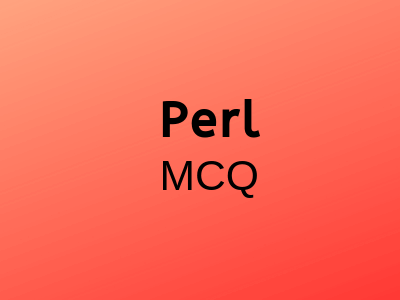PERL Multiple Choice Questions:-
1) Arrays are denoted by _______in Perl.
A. @
B. %
C. $
D. #
Ans: A
2) Scalar is denoted by_______in Perl.
A. #
B. $
C. %
D. ^
Ans: B
3) Does Perl have objects?
A. Yes
B. No
Ans: A
4) What will display the list of warning messages regarding the code?
A. Strict pragma
B. The -w Command-line argument
C. Using the built-in debugger
Ans: B
5) When the “require” function loads?
A. Runtime
B. Compile time
C. Both
Ans: A
6) The “+=” is which type of operator?
A. comparison operators
B. Arithmetic operators
C. Increment/ decrement operators
D. Assignment operators
Ans: D
7) Select the comparison operator from the options.
A. *=
B. &&
C. !=
D. =
Ans: C
8) Scalar stores –
A. Multiple values
B. Single value
C. Double value
D. Float value
Ans: B
9) The “%” is used for
A. Scalar variables
B. Hash variable
C. Arrays
D. Subroutines
Ans: B
10) What is used to identify the Subroutine?
A. @
B. $
C. &
D. #
Ans: C
PERL Objective Questions Pdf Free Download::
11) What is ‘->’ symbol?
A. Postfix dereference operator
B. Prefix dereference operator
C. Infix dereference operator
D. None of this
Ans: C
12) Can we load binary extension dynamically?
A. Yes
B. No
Ans: A
13) Select the option which allows the user to scroll through the entire program line by line in Perl.
A. Using the strict pragma
B. Using the built-in debugger
C. Using the string pragma
D. Using the built-in error
Ans: B
14) Command line arguments in Perl are stored in
A. Scalar
B. Resource
C. Array
D. Hash
Ans: C
15) Select data type in Perl which stores associative arrays.
A. Resource
B. Scalar
C. Hash
D. Array
Ans: C

